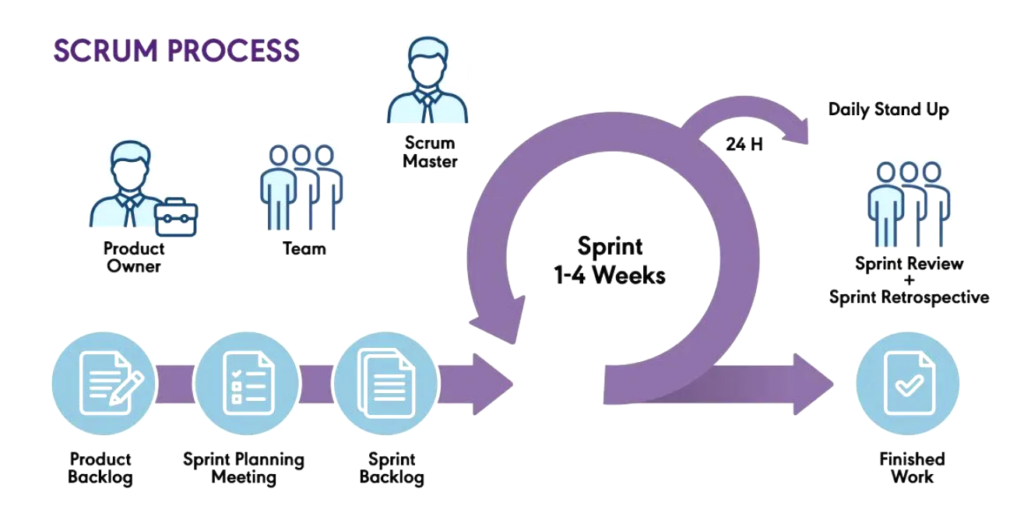The Scrum Enterprise Model (SEM) is an enterprise-level application built upon frameworks such as Scrum. To comprehensively understand the Scrum Enterprise Model, one must thoroughly learn and actively practice Scrum.
Scrum is a versatile framework originally developed for software product but applicable to any complex or innovative endeavor. It emphasizes adaptability and responsiveness through iterative, incremental processes known as Sprints, each typically lasting from one to four weeks.

In Scrum, product requirements are managed through a prioritized list called the Product Backlog, capturing user requirements and business value. Each Sprint selects a subset of these requirements for focused discussion, analysis, and estimation, forming a task list known as the Sprint Backlog. At the conclusion of each Sprint, the Scrum team delivers a potentially shippable product increment.
Historical Development of Scrum:
- In 1986, Hirotaka Takeuchi and Ikujiro Nonaka introduced a new holistic method for faster, more flexible product development, comparing it to rugby—hence the term “Scrum.”
- In 1991, DeGrace and Stahl officially named this approach “Scrum” in their book, “Wicked Problems, Righteous Solutions,” directly referencing Takeuchi and Nonaka’s analogy.
- In the early 1990s, Jeff Sutherland and Ken Schwaber independently refined and implemented Scrum practices, leading to their joint introduction of Scrum at the OOPSLA ’95 conference.
- In 2001, Schwaber and Sutherland contributed to the creation of the Agile Manifesto and its twelve underlying principles.
- In 2002, Ken Schwaber co-founded the Scrum Alliance with Mike Cohn to promote and develop Scrum further.
Scrum Framework Components:
Roles:
– Product Owner
– Scrum Master
– Developers
Artifacts:
- Product Backlog (prioritized list of requirements)
- Sprint Backlog (detailed tasks derived from the Product Backlog during Sprint planning)
- Increment (usable product increment delivered after each Sprint)
Events:
- Sprint (including the four subsequent events)
- Sprint Planning
- Daily Scrum
- Sprint Review
- Sprint Retrospective
Core Principles of Scrum:
Scrum relies on three foundational pillars to support empirical process control:
- Transparency
All aspects of the development process must be highly visible to ensure clarity and mutual understanding among stakeholders regarding standards and expectations.
- Inspection
Regular inspection of processes and products is essential to promptly identify deviations or issues. Inspections must be frequent enough to identify problems quickly without causing unnecessary disruption.
- Adaptation
When inspections reveal deviations from desired standards or outcomes, adjustments must be swiftly made to correct or realign the process, minimizing further deviation.
Inspection and adaptation in Scrum occur through specific practices:
– The Daily Scrum ensures alignment with Sprint goals.
– Sprint Reviews evaluate outcomes and inform future planning.
– Sprint Retrospectives facilitate continual improvement, enhancing team effectiveness, satisfaction, and collaboration.
The Scrum Enterprise Model (SEM) integrates all Scrum principles at the organizational level, amplifying Scrum’s effectiveness across an entire enterprise and ensuring maximal value realization.
